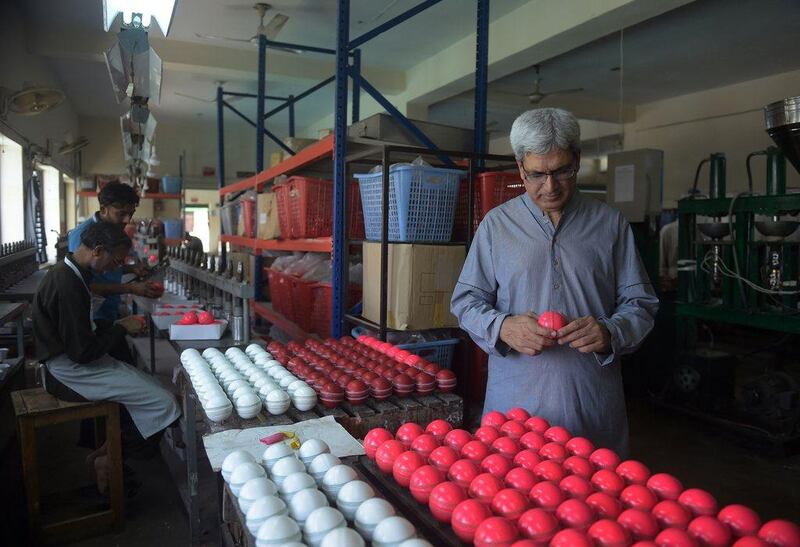As cricket stages its second day-night Test this week, factory workers in Pakistan will be among the avid television viewers — they might even have made the innovative pink balls being used by their heroes.
Pakistan host the West Indies in Dubai in a day/night Test featuring the pink ball, starting on Thursday.
It is a match that will be closely followed in Sialkot, the city that is the country’s sports manufacturing hub.
Pakistan’s sports goods industry is positioning itself to be the top supplier of the new pink balls aimed at dragging Test cricket into the 21st century.
“We are probably making 15,000 to 20,000 pink balls per year. The numbers of pink balls are growing,” said Khawar Anwar Khawaja, chief executive of Grays of Cambridge, who have been making cricket balls since 1953.
The high visibility balls made their Test debut last year when Australia played New Zealand in Adelaide, to mixed reviews.
More from Pakistan v West Indies:
• Video: Azhar Ali 'excited' about pink ball challenge in Dubai
• The Pakistan Project: Five-part series on the rise of the Test team
• Video: Cricket fans urged to take part in day/night Test in Dubai
But cricket’s governing bodies are committed to increasing the number of day/night Tests as they bid to reverse the trend of falling attendances.
After years of trials, the International Cricket Council (ICC) have chosen pink to replace traditional red under lights, as it is visible against both dark skies and the traditional Test match white kits.
Two major factories and dozens of small units in Sialkot are on the case.
“Last year we produced about 120,000 cricket balls, but our demand is growing. We hope to do this year minimum hopefully around 150,000 balls,” Khawaja said.
Test cricket is the sport’s longest format with matches that despite being scheduled for five days of play, can still end in a draw.
With breaks for lunch and tea, Tests evoke a bygone era and are losing support to the modern, shortest, form of the game, Twenty20.
The high-octane Twenty20 matches last around three hours, feature coloured kits, live performances, loud music and cheerleaders.
Outside of these two countries and India, filling stadiums across five days and attracting advertisers has increasingly become a problem.
Pakistan in particular have suffered since being forced to play home fixtures in the UAE after the 2009 attack on the touring Sri Lanka team’s bus in Lahore.
Misbah-ul-Haq, Pakistan’s celebrated captain who last month took them to No 1 in the rankings, is a firm believer that the “future belongs to night Tests”.
“Since the game is played for the fans and for the audience, this night cricket is the future and it’s definitely good for cricket,” he said last week.
The history of sports goods manufacturing in Sialkot dates back to the 19th century when locals first began to produce footballs for the British army, then the occupying power.
Today, the city’s sports exports are worth $900 million (Dh3.3 billion) annually, according to official figures, and have supplied balls for international competitions such as 2014 Fifa World Cup.
Established in 1953, Grays of Cambridge is Pakistan’s premier brand and produces red, white, pink and orange balls for the leading markets in Australia and England for top international brands such as Dukes and Gray-Nicolls.
“We have been producing pink for the last seven (or) eight years and exporting them to mainly Australia and to England as well,” Khawaja said.
The use of pink balls has been trialled by some domestic leagues, but has had its share of teething problems.
Both the Australia and New Zealand teams complained about the pink ball’s ability to swing and that it became too soft too soon.
Misbah, however, said players would adapt to the conditions in time.
“Since the game is played for the fans and for the audience, this night cricket is the future and it’s definitely good for cricket,” he said.
“The more frequently we play under lights, it will give more exposure and allow players to get used to it.”
Follow us on Twitter @NatSportUAE
Like us on Facebook at facebook.com/TheNationalSport





